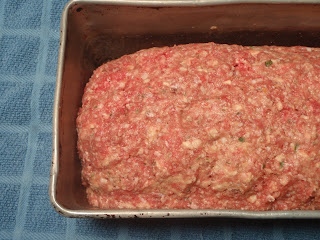Last time I went to Chicago it was by train.
It was cold, and the ground was frozen and little areas of snowy turf were visible spotting the Illinois countryside. I was a tad bored. My mind wandered and I started thinking about tundra, the steppe, babushkas, peasants, gulags, potatoes... and Dr. Zhivago. Yes, Mr. Pasternak. Seriously.
Why? Maybe it was the train and scenery medley.
You thought I might have talked about England here?
There was a little Solzhenitsyn thrown in, but no Tolstoy or Dostoyevsky- I don't know why.
With the visual portion of my imagination populated by an interesting Omar Sharif and Julie Christie/ Fiddler on the Roof combination cast my mind took off running from there. I will say that there was no dancing in this particular production.
My copy of Doctor Zhivago did not have pictures, I doubt yours did either. Anyway, Omar was convenient for this purpose... ready-made if you will. The same goes for Tevye and company. In addition to the imaginary scene being without dancing, there was also no singing. This was totally serious stuff.
Hmmm... it is interesting that Omar played a Russian very nicely even though he was Egyptian. Contrariwise, Yul Brynner the Russian played an Egyptian king (as well as a Siamese/Thai king and a cowboy), but did he ever pretend to be a Russian?
The trip back from Chicago should have been via train, however due to part of the track being torn up, it was on a Greyhound bus instead (Seeing Kankakee on a bus instead of a train? Unheard of! Should we tell Arlo Guthrie?).
It was new experience that shall never be repeated... it was awful for many reasons.
Anyway...
Salmon makes me think of blini with salmon, which I had several years ago on a train going to Salzburg. See? It's somewhat full circle. There are a few thematic connections here, folks (Russia, trains...).
Salmon also makes me think of Norway. When I think of Norway I think of fjords, skiing, sweaters, and snow. Ok, I'll admit I know pretty much nothing about Norway. Thor? Vikings, perhaps?
Well, I did read Kristen Lavransdatter... but that's a bit more medieval than modern (I'm not saying there's not a good message in the story by any means here).
Ok, so maybe that's my extent of Norwegian knowledge.
Just don't tell any Norwegians I said any of that. They might be insulted.
As for the recipe, the cream cheese spread also goes very nicely for cucumber sandwiches.
I like Pepperidge Farm Original White Bread. It's lightly sweetened, has a tight crumb, and is thinly sliced. If planning to use all the spread, you will likely need 1 1/2 loaves of bread.
Although for the cucumber sandwiches I think I'd prefer a darker, granier bread (which actually wouldn't be bad at all for the salmon, either... but if I made both types of sandwiches I would normally like some contrast).
For cucumber sandwiches you can either spread the cream cheese on both pieces of bread OR spread one slice with cream cheese spread and one slice with a thin layer of butter.
Also, don't make the cucumber sandwiches until you are ready to serve them since cucumbers are wet, and you don't want them to sit on the cream cheese bread and make sloppy sandwiches. However, the spread does somewhat act as a barrier to help protect the bread.
Smoked Salmon Tea Sandwiches
*cream cheese spread makes enough for approximately 48 triangular tea sandwiches.
5 T butter, room temperature
8 oz cream cheese, room temperature
3 t dried dill
1/2 t kosher salt
1/2 t freshly ground black pepper
zest of one lemon
juice from 1/2 lemon
12 oz smoked salmon
2 loaves good white bread (something with a dense crumb like Pepperidge Farm)
Cream butter and sugar in the bowl of an electric mixer fitted with the paddle attachment. Add dill, salt, pepper, lemon juice and zest and mix until combined.
Spread a thin layer of cream cheese spread onto each piece of bread, add a layer of salmon, and top with another slice of bread with cream cheese. Press down lightly so the slices adhere to the salmon. Continue with the other sandwiches. Refrigerate sandwiches, wrapped in plastic, at least 30 minutes.
Prior to serving, cut off crusts and cut the sandwiches diagonally into triangular quarters.
Prior to serving, cut off crusts and cut the sandwiches diagonally into triangular quarters.




































































